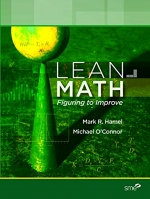Tab Article
Lean transformations are decidedly more challenging when the math is inconsistent with lean principles, misapplied, or just plain wrong. Math should never get in the way of a lean transformation, but instead should facilitate it. Lean Math is the indispensable reference for this very purpose. A single, comprehensive source, the book presents standard and specialized approaches to tackling the math required of lean and six sigma practitioners across all industries—seasoned and newly minted practitioners alike.
Lean Math features more than 160 thoughtfully organized entries. Ten chapters cover system-oriented math, time, the “-ilities” (availability, repeatability, stability, etc.), work, inventory, performance metrics, basic math and hypothesis testing, measurement, experimentation, and more. Two appendices cover standard work for analyzing data and understanding and dealing with variation. Practitioners will quickly locate the precise entry(ies) that is relevant to the problem or continuous improvement opportunity at hand. Each entry not only provides background on the related lean principles, formulas, examples, figures, and tables, but also tips, cautions, cross-references to other associated entries, and the occasional “Gemba Tale” that shares real-world experiences. The book consistently encourages the practitioner to engage in math-assisted plan-do-check-act (PDCA) cycles, employing approaches that include simulation and “trystorming.” Lean Math truly transcends the “numbers” by reinforcing and refreshing lean thinking for the very purpose of Figuring to Improve.


